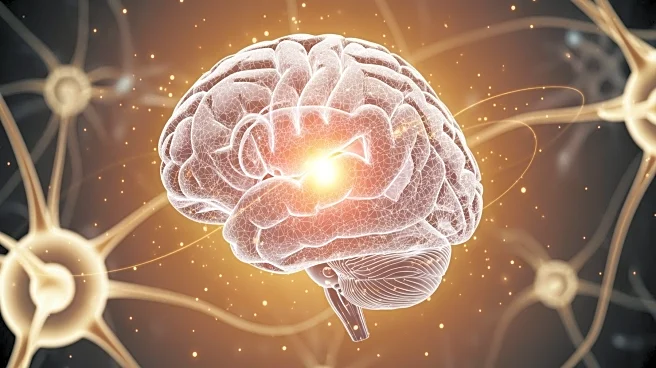What's Happening?
A recent study has identified a connection between shyness and spontaneous activity in the cerebellum, a brain region traditionally associated with motor functions. The research, published in the journal Personality and Individual Differences, suggests
that shyness is linked to less synchronized neural activity in the right posterior lobe of the cerebellum. This relationship is partly explained by the Behavioral Inhibition System (BIS), which governs sensitivity to potential social threats. The study involved 42 university students who underwent resting-state functional magnetic resonance imaging (fMRI) scans to measure brain activity. The findings indicate that individuals with higher shyness levels tend to have lower synchronized activity in the cerebellum, suggesting a neural basis for shyness that involves sensitivity to social threats.
Why It's Important?
Understanding the neural basis of shyness is significant as it provides insights into how personality traits are linked to brain activity. The study highlights the cerebellum's role in emotional and social processing, challenging traditional views that focus on the prefrontal cortex and amygdala. This research could influence therapeutic approaches for individuals with high levels of shyness, potentially targeting the BIS to reduce social inhibition. By viewing shyness as a meaningful difference in brain function rather than a flaw, the study encourages a more compassionate understanding of this personality trait, which could lead to improved social functioning and emotional intelligence.
What's Next?
Future research may explore interventions that modulate cerebellum and BIS-related circuits to reduce social inhibition. Techniques such as neurofeedback and real-time fMRI could help individuals gain control over their behavioral inhibition responses. Additionally, examining different subtypes of shyness, such as 'positive shyness' and 'fearful shyness,' may reveal distinct neural patterns. These efforts aim to develop personalized interventions that enhance social functioning in various contexts, including work and relationships.
Beyond the Headlines
The study's findings suggest that shyness may reflect a heightened sensitivity to social cues, which can be seen as a form of emotional intelligence. This perspective challenges the notion of shyness as merely a barrier to social interaction, promoting a more nuanced understanding of how individuals navigate social environments. The research also opens avenues for exploring how brain systems interact with personality and experience, potentially leading to more effective therapies for social anxiety and related conditions.
















